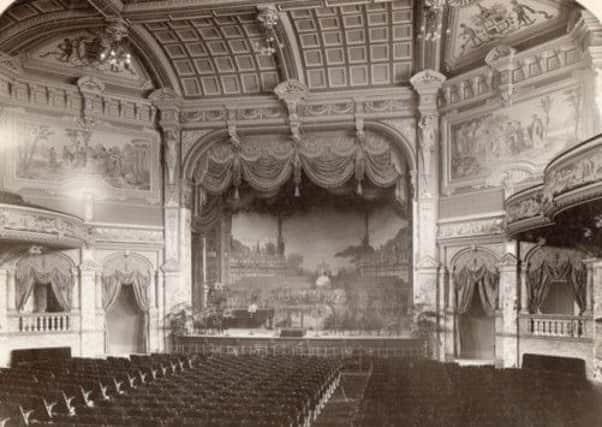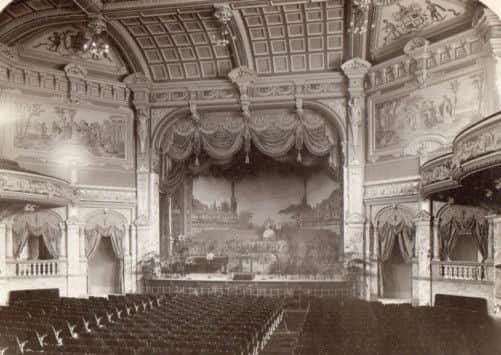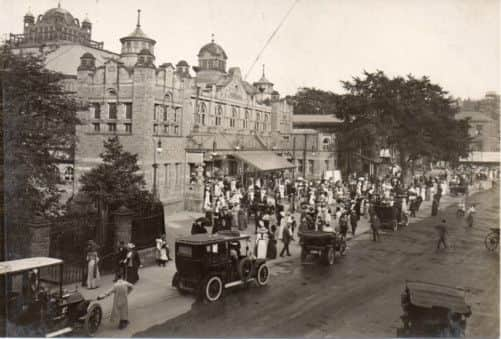Video: 110 years of Harrogate’s Royal Hall


But five years ago a major restoration project rejuvenated Harrogate’s iconic Royal Hall and on Monday an open day will be held at the theatre to mark its 110th birthday.
When it first opened in 1903, the hall, which was designed by the leading theatre architect Frank Matcham, was called the Kursaal, owing to its European-inspired layout which was rarely seen in the UK. The name was changed, however, because of anti-German sentiment which swept the country as it plunged into the First World War.
Advertisement
Hide AdAdvertisement
Hide AdMike Hine, of the Royal Hall Restoration Trust said: ”It’s unique in the sense that it’s the last surviving Kursaal in the UK.


“The main difference between a Kursaal and another theatre is that with a Kursaal you can walk 360 degrees so in other words there’s a promenade.”
In the build-up to the 110th anniversary Mr Hine and others have been collecting a database including historic images, photographs, posters and other memorabilia. Images collected so far show theatre-goers, interior shots and even shots of tennis’s David Cup, held in the Royal Hall Gardens in 1926.
A Kursaal is a German word meaning cure hall or spa and ambulating, promenading and musical entertainment were all part of taking the ‘cure’ in the hey days of Harrogate’s spa.
Advertisement
Hide AdAdvertisement
Hide AdIt was very much a multi-purpose building that was flexible enough to be used for concerts, tea dances and other social gatherings by day and music hall and glittering balls by night.


One of its usual features is the ability to stroll around the theatre, meaning members of the audience could enjoy a brief respite from what was happening on stage to take a light stroll completely around the auditorium.
The Royal Hall has been an entertainment venue for over a century playing host to acts as diverse as the London Philharmonic, dancer Anna Pavlova, Petula Clark and the Beatles but by 2002 it looked like its better days were behind it. It had to be closed because concrete used in its construction was found to contain a hidden timebomb – chemical salts had begun to erode and sections of concrete became structurally unsafe.
A £10.7m restoration project was subsequently launched and in 2008 it was reopened after being restored with a £6m grant from the Heritage Lottery Fund, £2m from Harrogate Council and £2.7m provided by the public through the Royal Hall Restoration Trust.
Advertisement
Hide AdAdvertisement
Hide AdThe restoration process halted the decay, but has also made the 1,300-seat Royal Hall fit for use in the 21st century.
It has not all been all plain sailing for the venue - last year a 12-month deal was finalised by the council to hand over the running of the Hall to Harrogate Theatre, with the aim of halting a decline in visitor numbers.
Mr Hine said the Trust was still fundraising to carry out other works including a project to improve the theatre’s main bar.
“We are still raising money because we want to do other things,” Mr Hine said.
Advertisement
Hide AdAdvertisement
Hide AdThe 110th Anniversary Open Day, organised by the Royal Hall Restoration Trust and Harrogate Theatre is at the Royal Hall, 10am-4pm on Monday. There will be a chance to tour the theatre, enjoy film shows, magicians, music and dance, children’s activities, and see displays of historical postcards and photographs.
Tickets are available from the Harrogate Theatre Box Office for £3.50 or £5 at the door on the day with accompanied children 16 years and under free.